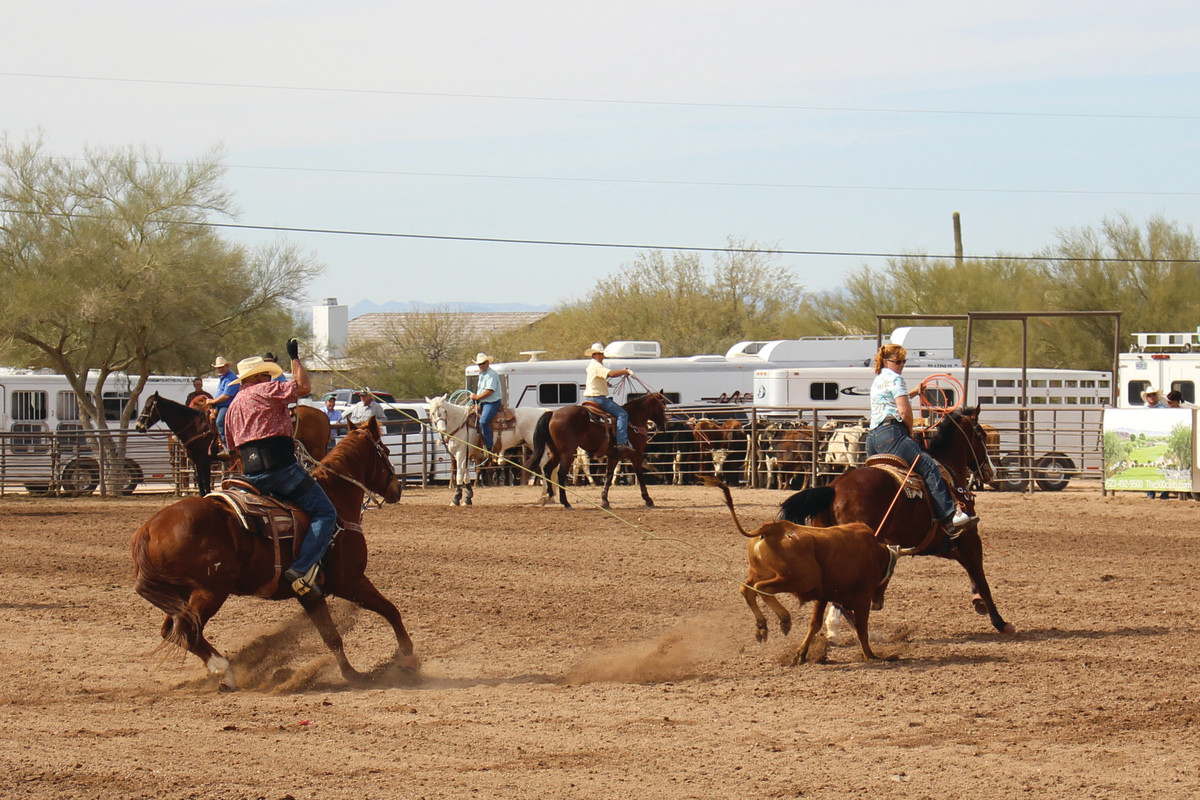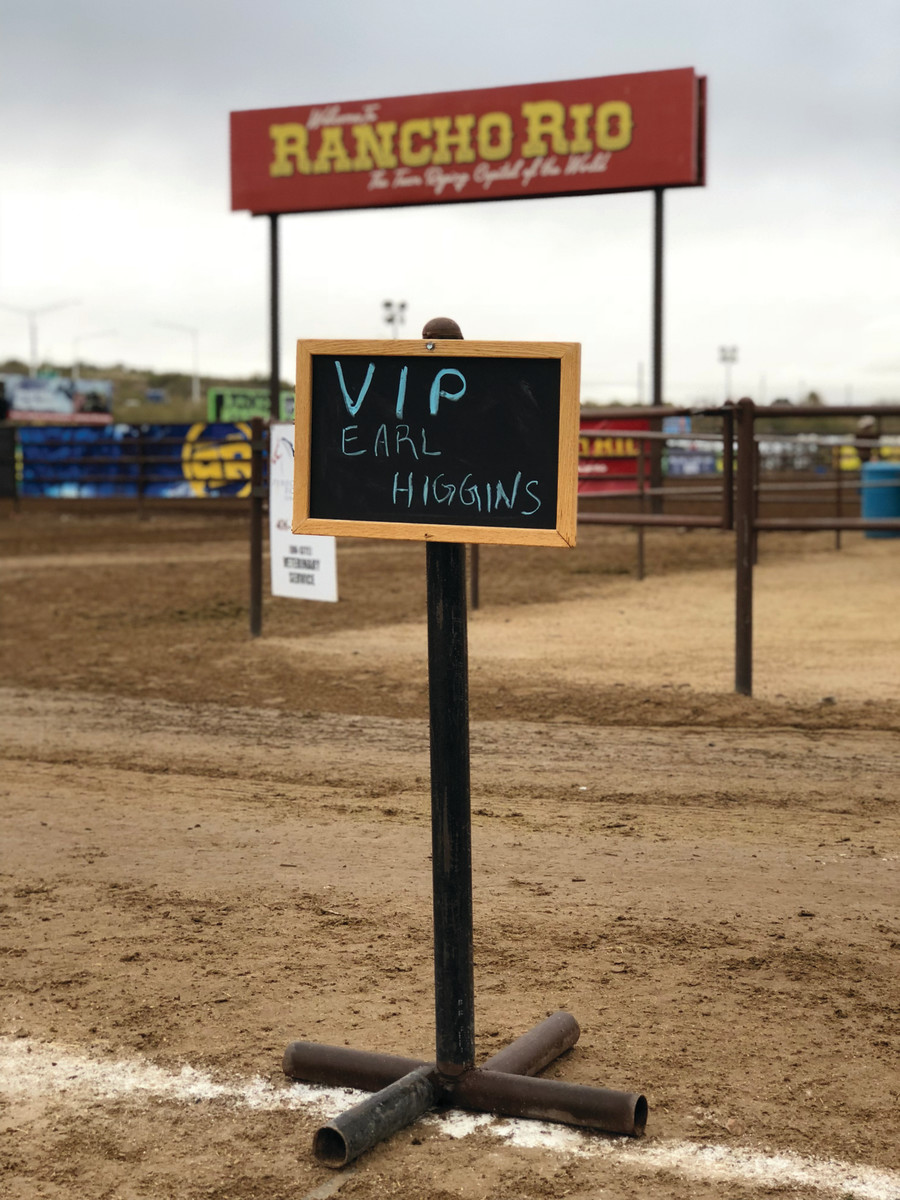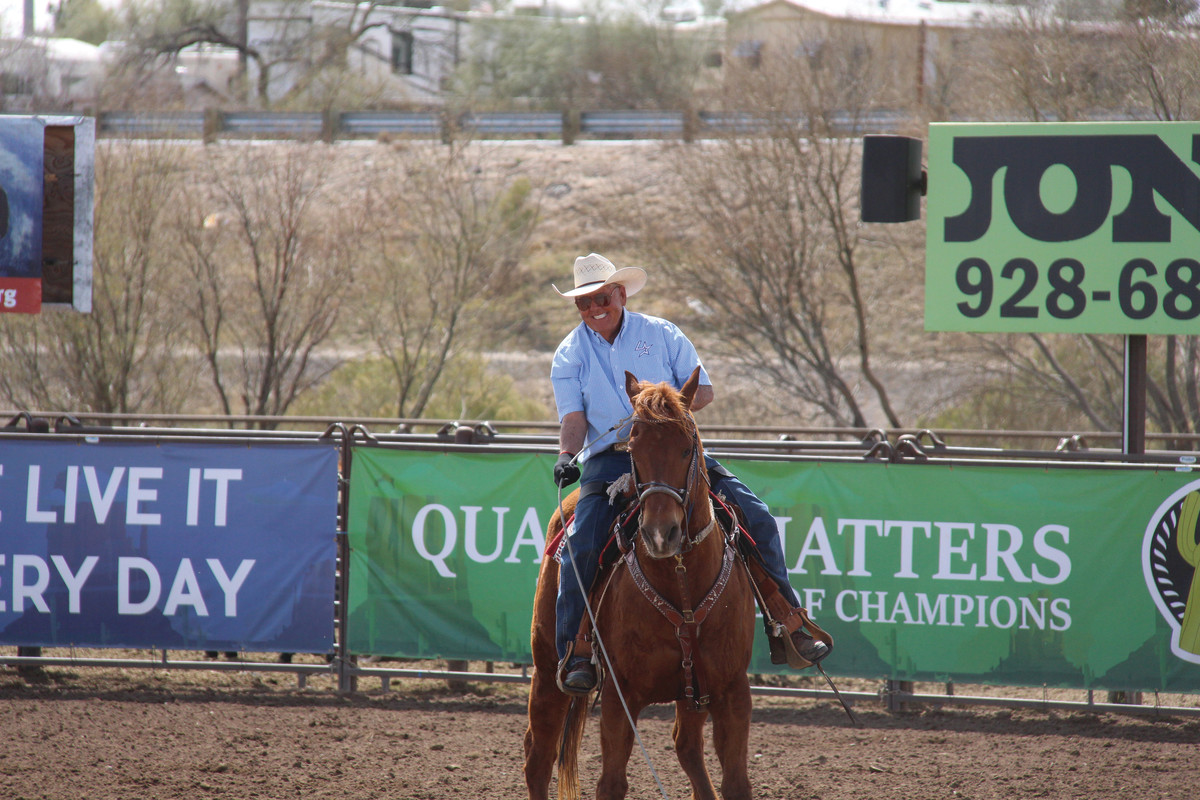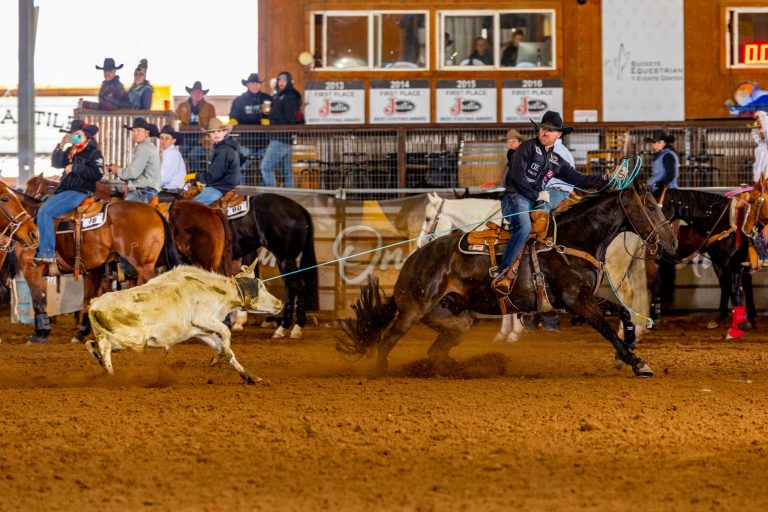Long before a few Navajo boys picked up wicked cowboying skills deep in the Arizona desert—which made them world champs—another guy, Earl Higgins, was doing the same.
“I used to trip steers out there doctoring cattle with Ike Rude,” said Higgins, an Arizona native. “I’d punch cows and join the roundups in the spring and fall and, when that was over, I’d go to rodeos all summer everywhere we could go.”
Higgins was still classified as a 7 at 70 years old. Today, at almost 81, he’s taking names at the biggest jackpots in the world.
He couldn’t have picked a brighter star to cowboy with than Isaac (“Ike”) Rude, who was also plenty wolfy at an advanced age. The Hall-of-Fame steer roper was 59 when he threw his hands up on his third gold buckle in 1953, and the record still stands. What’s more, Rude won the tie-down roping and placed second in the team roping at a rodeo in Texas when he was 77.
Higgins roped steers in the desert alongside another Hall-of-Famer, too. Joe Glenn spent more than 20 years among the sport’s elite team ropers, finishing in the top five on seven occasions. He won world titles in 1948 and 1967—and in 1959, he came in just $64 short of Jim Rodriguez Jr.’s gold buckle. That would have meant world championships in three different decades. Not unlike Rude, Glenn was 56 when he made his final NFR in 1970. He’d learned to rope on the family ranch in Cochise County, where Higgins would spend many a day stretching wild cattle.
“Joe Glenn was the best at laying the big trap and letting them get in it,” Higgins recalled. “He had pasture cattle out in the desert near Tonopah. We doctored a lot more than what was sick.”
Starting Young
Higgins’ penchant for roping anything that moved started in Show Low, a tiny town where his folks owned a motel in the 1940s.
“One time, when I was about 6, I roped this guy’s foot as he was walking down the sidewalk and he said, ‘Let me show you how you’re supposed to do that,’” Higgins remembered. “‘You throw it in front of the feet and let them walk into it,’ he told me. That was the first lesson I ever had roping, and about the only one. I learned to throw it in front of their feet and they’d get in it.”
This simple strategy has caused Higgins to catch so many cattle in a row by two feet over the past 65 years that he finally earned the nickname “Average”—and it doesn’t refer to his skill. He was relentless even as an 11-year-old. That’s when his uncle finally bought him a horse.
“I’d take my rope and twist it a bunch of times around my body and wear a Levi’s jacket over it and ride out to somebody’s pasture and rope their cows,” Higgins admitted.
He became a bull rider, but team roping was always his first love. When Higgins married Gail—a Scottsdale rodeo queen who’d grown up around her dad’s jackpot arena—team roping became the family obsession. The two of them traveled in a plywood camper they built themselves on the back of a pickup. Gail won a couple of WPRA world titles and even flagged some ropings.
“She’s probably the first lady who ever flagged out Leo Camarillo for crossfiring,” Higgins once said.
It’s clear they passed their rope-crazy genes on down.
Raising Ropers
Born in 1970, their son, Joe Burk Higgins—named after roping Hall-of-Famers Joe Glenn and Barry Burk—became a tough enough heeler that he teamed with eight-time world champ Joe Beaver in the mid-1990s, notching wins at rodeos like San Antonio.
Their daughter, LaRae Branham, was named after Earl (albeit spelled backward), and was just as salty with the twine. In 1982, her New Mexico Junior College team made the College National Finals Rodeo with just two women—and LaRae’s runner-up national titles in breakaway and all-around earned them second in the nation behind Betty Gayle Cooper’s powerhouse Southeastern Oklahoma State University team.

LaRae packed her rope to Oklahoma when she married two-time world champion steer roper Shaun Burchett and, once, even entered a match steer roping in Pawhuska. They had their daughter, Kelsi, in 1991, but Burchett was killed in a car accident in January, just four months after her birth. LaRae’s been back in Arizona ever since, with a name change after a marriage in the late 1990s to Chris Branham, with whom she has won some big jackpots.
The Higgins family is remarkably close, in large part because of team roping, LaRae said.
Higgins and Gail spent the years working on a ranch near Mayer, raising, breaking and riding rope horses by a Lucky Blanton stud they later sold to Mel Potter. When the ranch sold in 2001, they moved in with LaRae in Desert Hills.
Earl doesn’t drive, doesn’t have a phone (post-flip-phones are too “fancy”), and doesn’t have an arena. But neither he nor his daughter need to practice. It’s about fundamentals. They know how to catch. In fact, they’ve been roping together for 50 years; they’re each other’s favorite partners.
Dynamic Duo
“We’re both quiet and very competitive,” LaRae said. “We don’t like to lose, though people wouldn’t know it. Most of the time, I’m giggling and laughing and he’s grinning. But inside, it’s killing us.”
They haven’t suffered much, becoming possibly the winningest father-daughter duo of all time. Their #10 wins over the decades are countless—including placing fourth at the 2010 World Series Finale for $64,000 and placing ninth in 2014 for another $50,000.
“She takes a holt,” Higgins explained. “Modern-day ropers want to go in a big circle around the arena. She was taught that when you catch, that’s as far down the arena as you go. I can’t chase them in circles like so many do now.”
As for LaRae, a teacher at a local charter school, she gets choked up when she talks about “the big old trap” her father throws in front of a steer’s hind legs, and the way he can rope the draggers—the ones that jump high. His reputation as “a catcher” started with a gazillion loops thrown at a sawhorse, along with those tricky gates he set down in the ’60s and ’70s at feedlots and between mesquite trees.
“He craves it like nobody I’ve ever known,” LaRae said. “He’ll go to the roping all day long while I’m at school, and then come to the practice pen with me in the evening. He’d rope every day, twice a day if he could.”
Sacrifices
It hasn’t come without a price. Higgins has had a knee replaced, hernia surgery, a split pelvis and shoulder surgery. But they were nothing compared to the 16-inch scar down his back from three different fusion surgeries that began in his truck-driving days.
A fourth operation on his back, three years ago, was unnecessary, the surgeon doctor told him—as long as he would just stop roping.
“I said, ‘I’m not going to quit, so you’d just as well get to it,’” Higgins recalled.
Unfortunately, the surgery left him paralyzed in one leg. Regaining movement required three months of grueling work at a rehab hospital. Both his feet feel like they’re asleep all the time now, and he can’t put much weight in the stirrups.
“I probably don’t look very good while I’m roping, but I still get it done,” he said.
Does he ever. On the first Wednesday of November, Higgins placed second in the #10 at his favorite venue—Dynamite Arena. That Friday, he took second again in the #10 Legends. Then, the following Monday, he and LaRae started the week right by winning the #10 Megabucks together at Rancho Rio.

“I do the same old thing,” he said. “I get it in front of their feet and let them get in it. Them kids anymore, they can reach and do that—I’ve got to get closer. They can just make the corner and they’ve learned how to make that rope come from the bottom right on up. Old guys can’t do that.”
Loving It
But now, more than ever, old team ropers can make bank. Gail figures her man has earned more money with his rope in the past 30 years than he earned working full-time and roping in the 30 years before that.
He doesn’t take a season off, either. Annually, the clan heads to Jackson Hole, Wyoming, the day after LaRae’s school gets out and returns the day before it starts again. That’s where LaRae’s daughter, Kelsi—a social worker—started her own family. Then, around Labor Day, Higgins said, Gail drives them to the New Waverly, Texas, home of Joe Burk for two months, where they hit a big World Series in Hamilton and he “gets me tuned up.”
After 58 years of marriage and saddling up and chute-running, Gail still loves going and she still watches every team at the ropings. She said it’s Higgins’ love of the sport—and his disposition—that have been the biggest keys to his success.
“You have to be able to lose and keep going,” she said. “Some team ropers, when they lose, they lose the drive to go do it. He’s always loved it enough to get past the losses.”
Maybe that love came from chasing the wild cattle of Arizona’s mountain pastures and desert washes astride self-trained horses. It worked for old Ike Rude. Or, anyway, it’s at least clear that Higgins shared one other legacy with the gold-buckle winner: It was said that, “All he ever wanted to do, his entire life, was rope.”











